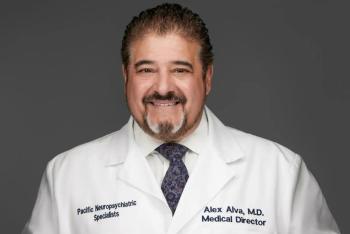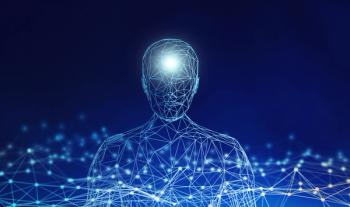
Digital Therapeutics: Addressing Health Care Worker Burnout and Mental Health Distress
Is the solution to health care professional burnout in our phones?
The COVID-19 pandemic wreaked havoc on many lives, including those of the world’s health care professionals (HCP). Limited understanding about the virus, scant medical equipment and personal protective equipment, an overwhelming number of desperately ill patients requiring extreme treatment measures, an even more overwhelming number of patient deaths, and serious staffing shortages created a perfect storm of stress and burnout among those tasked with providing treatment and care.
HCPs were not immune from the virus, either. According to research conducted by The Guardian and Kaiser Health News, 3607 healthcare workers died between March 2020 and April 2021.1 Frontiers in Psychology reported trauma- and stress-related symptoms as high as 35% among health care workers, especially women, nurses, frontline workers, and those experiencing COVID-19 symptoms.2
The
Fortunately, significant growth in the variety and prevalence of
Using DTx to Support Health Care Professionals
There is no question that burnout became an even greater occupational hazard for HCPs during the COVID-19 pandemic. In addition to higher-than-normal workloads, these professionals have experienced multiple psychosocial stressors affecting both emotional and mental health, leading to burnout symptoms.
While the pandemic certainly changed how HCPs operate, it has also elevated the conversation about the importance of recognizing and prioritizing individuals’ mental health and wellbeing.
One study, titled “The mental health impact of the COVID-pandemic on healthcare workers and interventions to help them,” indicated a variety of resources to help HCPs alleviate stress and
One study indicated that while digital technologies like electronic health record (EHR) systems can play an important and necessary role, they also cause stress. EHR systems monitor HCPs’ performance and qualifications and require that professionals spend a significant amount of time inputting data. However, digital technologies can also provide mental health services and increase HCPs’ empowerment via
There is no denying the stigma that still surrounds mental health, even among HCPs. In reporting by the New York Times, HPCs cited concerns about stigma in the workplace, professional reprisal, and a lack of access and affordability.5
Burnout on the COVID-19 Front Lines
Burnout is nothing new, and it has been a concern affecting all HCPs for decades. Defined by the International Classification of Diseases (ICD)-11 as “caused by chronic stress in the workplace which is not managed successfully and is characterized by three dimensions: 1) feeling of energy loss or fatigue; 2) increased mental distance from one's job or negative feelings or pessimism about the job; and 3) reduced professional effectiveness.”6 It describes accurately the experiences of the majority of HCPs over the past 14 months.
The results of a study on Global Health Workforce Labor Market Projections for 2030 are stark: researchers estimate a global shortage of 15 million healthcare workers in fewer than 10 years.7 That shortage may increase even more, exacerbated by the number of HCPs who have been driven by
How can we stem this flow? Through the innovation of DTx as a treatment not just for healthcare patients but for the healthcare professionals themselves.
Pairing DTx With CBT
While DTx do not replace physicians or psychologists, they offer another tool with which to provide treatment—and they are designed for quick deployment to patients.8 More DTx applications continue emerging to assist clinicians treating mental health disorders, including the digital application of
Many HCPs indicated struggling with developing and maintaining healthy sleep habits since the pandemic’s onset. Sleepio, a digital sleep improvement program, uses a web-based application and CBT to provide coaching
The company GAIA offers a range of solutions like an online program, deprexis, designed to help treat depression. Patients in real-life, clinical settings, as well as in 14 randomized control trials, indicate the program reduces symptoms of depression as nearly effectively as antidepressants.12
Studies have demonstrated DTx’s efficacy for mindfulness training (MT) via smartphone apps—an effective way to ameliorate some of the stressors associated with burnout.13,14 While the need for further research was indicated, researchers suggested that MT can provide immediate support for moods and stress.15
Concern about long-term physical and mental effects from burnout16 led to some health care systems exploring Freespira—an FDA-approved DTx designed to help reduce or eliminate symptoms of
St. Luke’s University Health Network partnered with AVIA to offer its health care workers a DTx solution to help manage work-related anxiety, depression, and stress: SilverCloud. This platform—informed by CBT, mindfulness, and psychology—offers 24/7 access to self-guided and coached interventions. Of the 1038 respondents to a survey, users reported 97% satisfaction. A majority agreed/strongly agreed the program contributed to their progress to achieving their goals.18
Texting as an Effective DTx
Embedded in the cultural fabric of the world—and one of the most popular ways to connect nearly instantaneously with others—texting offers immediate, concise communication while also providing opportunities to implement innovative therapeutic strategies.
For example, the American Nurses Association piloted and has since expanded an mHealth text messaging program designed to provide nurses with support resources and positive affirmations via SMS messages. The Arizona Nurses Association launched the successful pilot in August 2020. Approximately 4000 nurses—75% of whom worked in direct patient care and 60% of whom worked with COVID-19 patients—participated in the program.19
The organization partnered with SlickText, which customized its mHealth platform to offer supportive text messages like, “#RNConnect Trust in yourself and believe in your skills. You survived a rough year and will survive whatever is to come.”20 Additional support resources sent to nurses via text included support for managing grief and loss, breathing and mindfulness, moral distress information, and reminders to take self-compassion breaks.
Preventing Suicide
Depression and burnout are not the only struggles HCPs have faced;
One possible DTx available not just to the general population but HCPs in particular includes an updated platform for connecting to the National Suicide Prevention agency. In the summer of 2020, the Federal Communications Commission (FCC) voted to require a new “988” number for individuals to contact a suicide-prevention hotline. Crisis counselors had already been responding to texts sent via the 10-digit number, but in April 2021, the National Suicide Prevention agency voted unanimously to initiate a process requiring phone companies to allow people to text using 988.24
Evaluating the Best DTx
According to the IBM mini pulse survey of health care and life sciences professionals in Europe and the US,25 digital solutions offer significant benefits (
For scalable digital therapies to work, their delivery must align with patient—including HCP—needs. The range of DTx has exploded and will continue to grow, as HCPs, therapists, clinicians, and even employers (like health care systems) are seeking more affordable options to offer their workers easier, more affordable access to therapies should ask a few questions:
- Has this specific service or solution been tested in a randomized controlled trial?
- Have independent, peer-reviewed journals published clinical research on the solution?
- What percentage of study participants saw a reduction in their mental health symptoms?
- Which populations did researchers use to test a solution?
- What was the effect size of the primary outcome—and was it within-groups or between-groups?
Concluding Thoughts
DTx will never replace medical professionals, but those health care providers, including mental health professionals, who embrace this technology may find it augments the care they provide.26 Because FDA regulatory requirements are lower compared to other pharmacological-based therapies or medical devices, DTx are well-positioned to give health care professionals easier, more flexible, less conspicuous, and more affordable access to mental health therapies through their smartphones and tablets.
Dr Cato is the Chief Executive Officer of the Arizona Nurses Association, a Director at Large for the ANCC Commissioner on Accreditation, former president of the Arizona Nurses Association Special Interest Group Nurse Educators, and Executive Director of the Arizona Foundation for the Future of Nursing. She has 22 years of nursing experience in the US and 3 years in China.
References
1. Lost on the frontline. The Guardian. Accessed September 1, 2021.
2. Benfante A, Di Tella M, Romeo A, Castelli L.
3. Muller AE, Hafstad EV, Himmels JPW, et al.
4. Sharifi M, Asadi-Pooya AA, Mousavi-Roknabadi RS.
5. Ellin A. Doctors, facing burnout, turn to self-care. The New York Times. January 26, 2021. Accessed September 1, 2021.
6. World Health Organization. Burn-out an “occupational phenomenon:” International Classification of Diseases. May 28, 2019. Accessed September 1, 2021.
7. Liu JX, Goryakin Y, Maeda A, et al.
8. Digital Therapeutics Alliance. Therapeutic areas for which digital therapeutic products are available or currently being developed. March 2020. Accessed September 1, 2021.
9. Dang A, Arora D, Rane P.
10. Scales C, Dehtiarova O. Digital therapeutics revealed: evidence-based healthcare solutions. Star. October 23, 2020. Accessed September 1, 2021.
11. Big Health helps employees get more shut eye with Sleepio, a digital sleep improvement program. Castlight. January 1, 2018. Accessed September 1, 2021.
12. Gaia. Accessed September 1, 2021.
13. Walsh KM, Saab BJ, Farb NAS.
14. Iyer L, Iyer RB, Kumar V.
15. Gál E, Stefan S, Cristea IA.
16. Hackett M. COVID-19-related mental health issues could have long-term effects on healthcare workers. Healthcare Finance. January 26, 2021. Accessed September 1, 2021.
17. Spitzer C, Koch B, Grabe HJ, et al.
18. Siwicki B. St. Luke’s reduces employee burnout and mental health costs with digital health tool. Healthcare IT News. December 8, 2020. Accessed September 1, 2021.
19. Bailey V. mHealth program aims to address pandemic stress, burnout in nurses. mHealth Intelligence. May 28, 2021. Accessed September 1, 2021.
20. SlickText. Accessed September 1, 2021.
21. Aguilera A, Bruehlman-Senecal E, Demasi O, Avila P.
22. Davis MA, Cher BAY, Friese CR, Bynum JPW.
23. Spencer J, Jewett C. Twelve months of trauma: more than 3,600 US health workers died in Covid’s first year. The Guardian. April 8, 2021. Accessed September 1, 2021.
24. Arbel T. Texting option weighed for upcoming '988' suicide hotline. ABC News. April 22, 2021. Accessed September 1, 2021.
25. Böhm L, Büsser A, Pesse K, et al. How digital therapy benefits patients, providers, and the health ecosystem. IBM. Accessed September 1, 2021.
26. Carl J. Digital therapeutics can close the employee engagement gap in mental healthcare. Benefit News. May 27, 2021. Accessed September 1, 2021.
Newsletter
Receive trusted psychiatric news, expert analysis, and clinical insights — subscribe today to support your practice and your patients.




